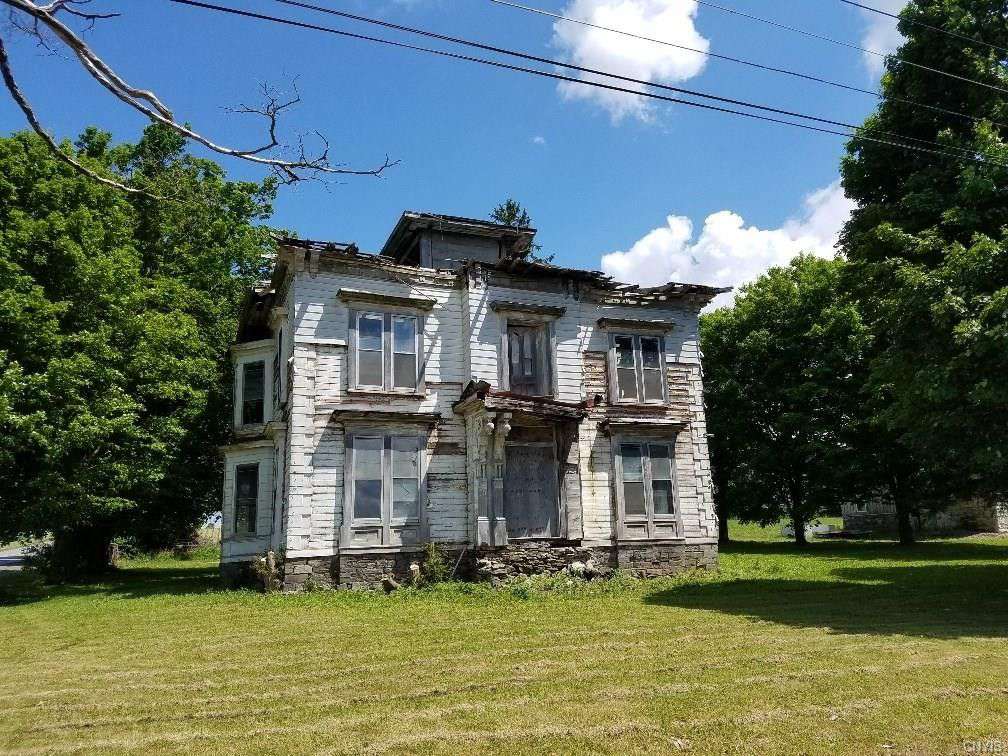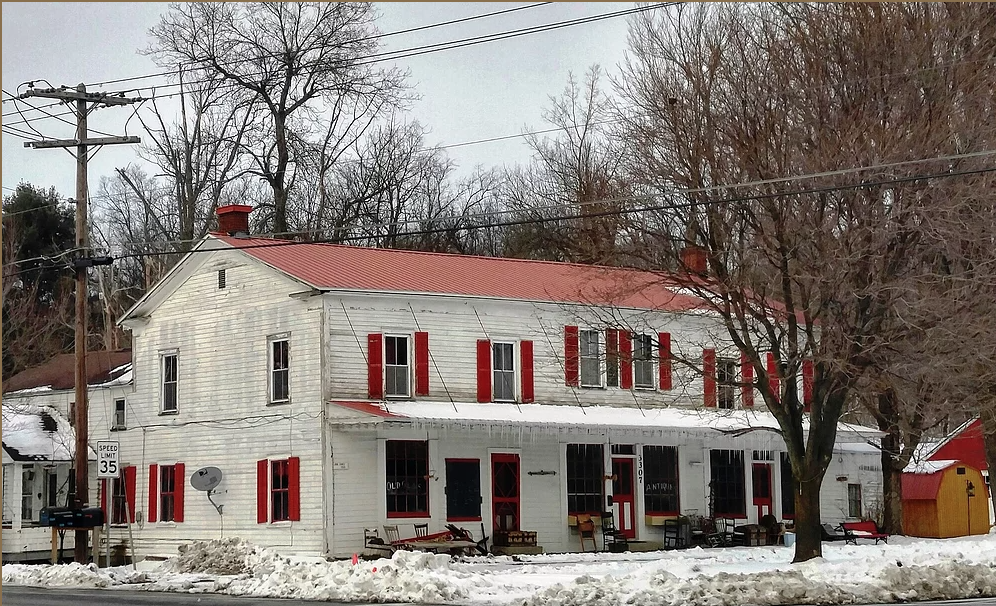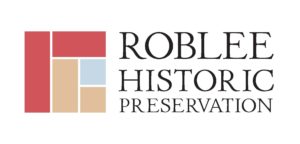The Eight That Can’t Wait, PACNY’s annual list of challenged and threatened properties, is intended to raise public awareness about historic resources in our five-county region threatened by issues such as deterioration, demolition, redevelopment, and inappropriate alterations. The Eight That Can’t Wait is also intended to raise awareness about opportunities for preservation and rehabilitation.
In addition to raising public awareness through traditional and social media outlets, PACNY will track progress and offer assistance, such as letters of support, preservation planning guidance, and networking with our preservation partners.
The Eight properties were selected from nominations submitted by the public, PACNY members, and the PACNY Board of Directors. This year our properties include both individual properties, and region-wide typologies that are under specific threats.
REGION-WIDE: HISTORIC BRIDGES

- Historic bridges come in a wide variety of shapes and sizes, from intricately criss-crossing Warren Truss bridges, to arched stone spans that exhibit both power in their monumentality and grace in their curves. Historic bridges area reminder of the days of aesthetic engineering and are often visually stunning parts of the built environment”
- Preservation challenges/opportunities – With a massive infrastructure bill nearing a compromise in Congress, and state-level projects already underway, a torrent of proposed bridge replacements will inevitably wash over our state and region. We encourage local activists and state-level representatives to provide the same attention and care to historic bridges, such as the stone arch Aurelius Avenue bridge built in 1886 in Auburn, as they give to historic buildings.
REGION-WIDE: HISTORIC CEMETERIES

- Cemeteries are among the most valuable of historic landscape resources. They are reminders of various settlement patterns, such as villages, rural communities, urban centers, and ghost towns. Cemeteries can reveal information about historic events, religions, lifestyles, and genealogy.
- Preservation challenges/opportunities – Due to a lack of funding, cemeteries throughout the area are in need of maintenance. This intensive labor involves remounting and repairing stones. Locals of Spafford are especially concerned about the lack of mowing and general lack of upkeep. They face risks from neglect, lack of funds or understanding of responsibility for maintenance, improper “fixing” and cleaning of stones that actually cause more damage, poor maintenance practices, vandalism, etc.
REGION-WIDE: UNIVERSITY BUILDINGS

- Central New York is home to some of the most prestigious historic colleges and universities in the nation, including Syracuse University, Colgate University, and Well College. These and other schools in the region convey the rich and deep history of the region’s vital role in the field of higher learning through the historic buildings located on nearly every campus in our five counties.
- Preservation challenges/opportunities – As higher learning become big business, the funding made available to attract increasing numbers of students has lead to insensitive treatment, and sometimes total demolition of cherished university halls and associated structures. We call on our region’s centers of high education to find ways to use the historic character of their buildings and adjacent neighborhoods to attract students, and recommend rehabilitation and adaptive reuse over demolition and bad development.”
JABEZ ABELL FARMHOUSE

- A beautiful example Italianate architecture was built in 1870, and the property originally encompassed approximately 95 acres of farmland and noted Cazenovia family. The home boasts a stately cupula, carved wooden brackets, and within a three-story spiral staircase, and walnut and cherry woodwork throughout. In 1987 this home was placed on the National Register for Historic Places.
- Preservation challenges/opportunities – In 2021, in order to raise awareness of the property, and other historic resources in the area, new preservation association Cazenovia heritage adopted the roofline of the building into their logo. Much of the original acreage has been parceled off (including the adjacent barn) and now encompasses only .75 acres.
- Abandoned by a series of absentee owners for over 30 years, the home was recently purchased by local contractor Brian Coughlin, who has spent considerable effort to stabilize what he can. According to Coughlin, it would be about $150,000 to restore the framework and exteriors.
- It qualifies for both federal and state grants or tax breaks to undertake the preservation work needed, and the property is being sold “as is.”
- In article from June 2020, the home was listed for sale at $27,500
OLD DROVERS TAVERN

- The building was constructed c.1804 serving as a tavern for cattle drovers on the Cherry Valley Turnpike (US 20) that had opened just a few years earlier. Old Drovers Tavern at Nelson was originally known as The Sickle and Sheath Drover’s Tavern
- The tavern went through multiple owners during much of the mid-19th century. In 1874, it had extensive repairs before opening a store there that included a reconstruction of the hotel facade to include two of the present-day storefronts and canopy. The building also served as the village post office, a feed store in one half of the building. After the post office closed in 1934, an antiques store moved in the other half. Bryan and Anna James continued to sell antiques and lived in the building until Bryan’s death in 1972, at which time Bill Magee bought it. The building continued to be an antiques store and auction house until recently.
- Preservation challenges/opportunities – The building is eligible for the National Register of Historic Places.
- Raising awareness and funds for preservation and stabilization of the structure has been taken up by the Nelson Preservation Associates, Inc, a non-profit organization committed to the preservation of historic Nelson, NY
- Nelson Preservation Associates is seeking donations from the community to raise the needed funds for basic work, like purchasing exterior paint. The goal is $2,000, and if you are interested in donating you can visit their Go Fund Me Page, and other donations can be made through the Old Drovers Tavern website
GOTHIC HOUSE at 7152 East Genesee Street

- From 1979 Building Structure Inventory form: “This very fine Gothic Revival house of excellent detail for this area. House has a very unusual (regionally…) jerk-head roof with many decorative, paired console brackets. Windows are many and varied: lancet windows withe archivolt shouldered trims; straight headed windows with shouldered architrave trim; Doorway is set in a projecting bay below a central gable dormer. Door is a double, many paned door with Tudor arch transom light and straight canopy on brackets above door. Built circa 1855 or 1860s.”
- Preservation challenges/opportunities – The property, which encompasses just over 4 acres, is currently owned by Fayetteville Farms LLC. There has been proposed demolitions projects for this building, by the absentee owner
- It is an example of buildings that are threatened by lack of any sort of protections afforded by municipal governments in our service area.
- there is an old SHPO inventory form but the house has not been determined NR-eligible. Even if it had it would not matter because the Town of Manlius does not require SEQRA be completed for demo permits so there is no regulatory trigger for SHPO to review the project and issue a finding of adverse impact, recommend some sort of mitigation, i.e., documentation, etc.
- Local resident Elbridge Kinne had contacted PACNY, writing “This was my parents’ home from about 1956 to about 1994. I was 12 when we moved in, was 21 when I moved out for the first time, then moved back & fourth several times until 1974 when I bought a house in Fayetteville. I tell you this so you know I am well acquainted with the old place having spent many years living there.” This home has received many inquiries into it being saved, as well as many expressions of admiration and appreciation from the community, and there is an obvious vested interest from the local community to save this gothic revival beauty
GLEN LOCH MILL AND RESTAURANT

- Built in 1870 as a feed mill, the Glen Loch Mill restaurant was a landmark in Jamesville for many years, hosting dinners, high school graduation parties, plays and other events dating back to 1972.
- Preservation challenges/opportunities – The restaurant closed in 2013, and the building has deteriorated significantly since that time. After a failed attempt to rvive the property ended in an ownership dispute, the current owner has been public about his plans to rehabilitate the historic mill and restaurant. PACNY recommends that all available incentive programs be utilized to bring back this historic gem and is ready to provide support in the owner’s efforts, should it move forward.”
LOCK #5, OLD OSWEGO CANAL (MUD LOCK)

- The historic “Mud Lock” is part of the Old Oswego canal, which was constructed in 1828. The Mud Lock is part of a statewide canal system that transformed New York State into an economic hub. When the canal bed was filled and turned into a highway, this lock was repaired and left standing as a monument to canal days.
- Preservation challenges/opportunities – disuse, lack of support and funding from the municipality



